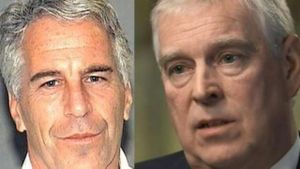Finance Minister Nirmala Sitharaman presented the Union Budget 2025-26 on February 1, 2025, outlining key strategies to facilitate economic advancement, promote social equity, and reinforce India’s footprint as a leading global player.
The budget, heralded as pivotal for stimulating growth, places considerable emphasis on enhancing the disposable income of the middle class and addressing their financial well-being. "This budget is an effort to accelerate growth, secure inclusive development..." stated Sitharaman, aiming to invigorate societal and industrial sentiments. Despite recognizing the rising global economic uncertainties, the Finance Minister expressed confidence in India’s enduring resilience, marking the nation’s transformation to become one of the fastest-growing economies globally.
A staggering capital expenditure of ₹10.18 lakh crore has been allocated, with fiscal deficit projections set at 4.4% of GDP for FY26, indicating the government’s commitment to balanced fiscal management. The new income tax regime now exempts incomes up to ₹12 lakh from taxation and introduces revised tax slabs aimed at providing notable relief measures for the burgeoning middle class. This restructuring is expected to channel more resources back to consumers, thereby nurturing domestic demand and spurring upliftment across various sectors.
The budget’s vision extends beyond fiscal frameworks; it also encapsulates initiatives focusing on agricultural reforms and rural development, envisioning the establishment of the National Mission on High Yielding Seeds aimed at uplifting 1.7 crore farmers. Notably, the establishment of the 'high-level committee' signalling the endeavor to streamline regulations and nurture ease of doing business has been endorsed as transformative. The committee's mandate focuses on updating antiquated laws for creating flexible regulatory frameworks conducive to business growth.
Prof. Aarti Srivastava of Chitkara University expressed at the National Colloquium on Union Budget 2025-26, "Investing in higher education is investing in the future of our nation", echoing sentiments shared by leading experts at the event who reported the necessity for aligning educational structures with market and industry demands, emphasizing the need for strategic investments aimed at elevelling skill levels across the economic spectrum.
On the agricultural front, the Dhan-Dhaanya Krishi Yojana is anticipated to augment productivity, particularly targeting underdeveloped districts. Analysis of this measure suggests it addresses grassroots economic pressures more effectively through initiatives fostering enhanced accessibility and infrastructural support. The projections demonstrate importance for maintaining India's agricultural sector's health, anticipated to act as a buffer against future supply chain disruptions.
Meanwhile, the commitments to boost women's economic participation, with aspirations set at 70% workforce inclusion, reflect the government’s identification of socio-economic equity as integral to its long-term framework. Beyond financial incentives, these initiatives compel industries to innovate structures and seek diverse talent pools.
Highlighting the budget's comprehensive strategy, Sitharaman addressed the imperative for sustainability intertwined with economic growth, stating, "Our economy is the fastest-growing among all major global economies.” She emphasized the government's historical strides over the past decade, underscoring the importance of seasoned measures to solidify investor confidence and facilitate inclusive growth trajectories.
The initiative’s commitment to technological advancement is particularly evident with the allocation of ₹500 crore for setting up Centres of Excellence aimed at intertwining artificial intelligence with the educational sector, addressing modern skill-related gaps. Prof. Mini Govindan posited, "To achieve our climate goals, India must adopt a multi-faceted approach..." advocating for integrating renewable energy across all sectors, aligning climate objectives with economic growth avenues.
With the holistic provisions outlined throughout the proposed budget, potential beneficiaries across varied economic fronts indicate favorable outcomes not solely for private investors but also the everyday Indian. The focal point hinges on enhancing consumption levels, promoting MSMEs through increased credit guarantees, and bridging service gaps to unify various sectors.
Concluding, this budget aims to position India on the developmental path toward 'Viksit Bharat' by 2047, mirroring the government’s ambitions for comprehensive economic integration. The measures outlined represent not only fiscal adjustments but also serve as strategic initiatives aimed at nurturing human capital and addressing systemic challenges within key sectors.



